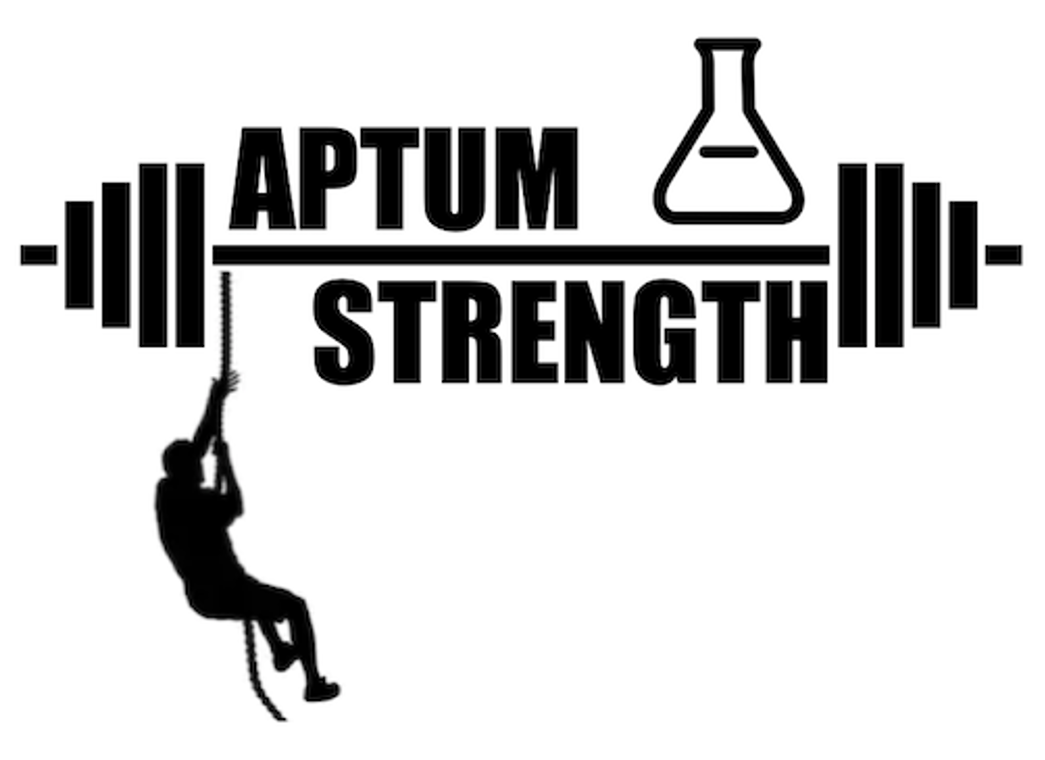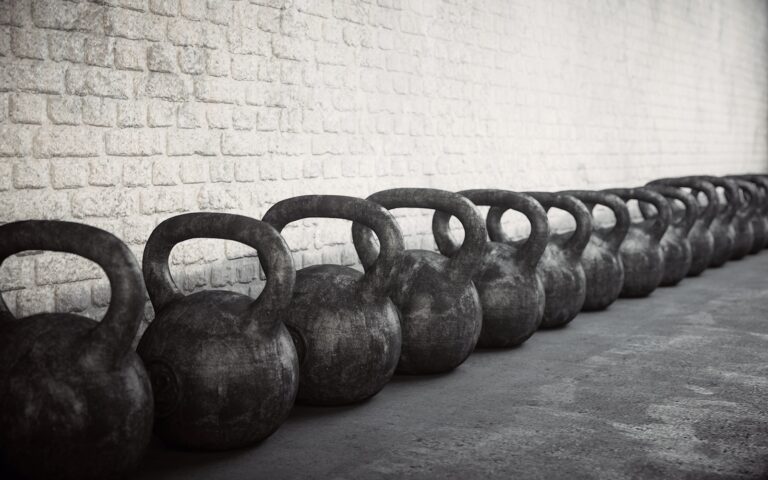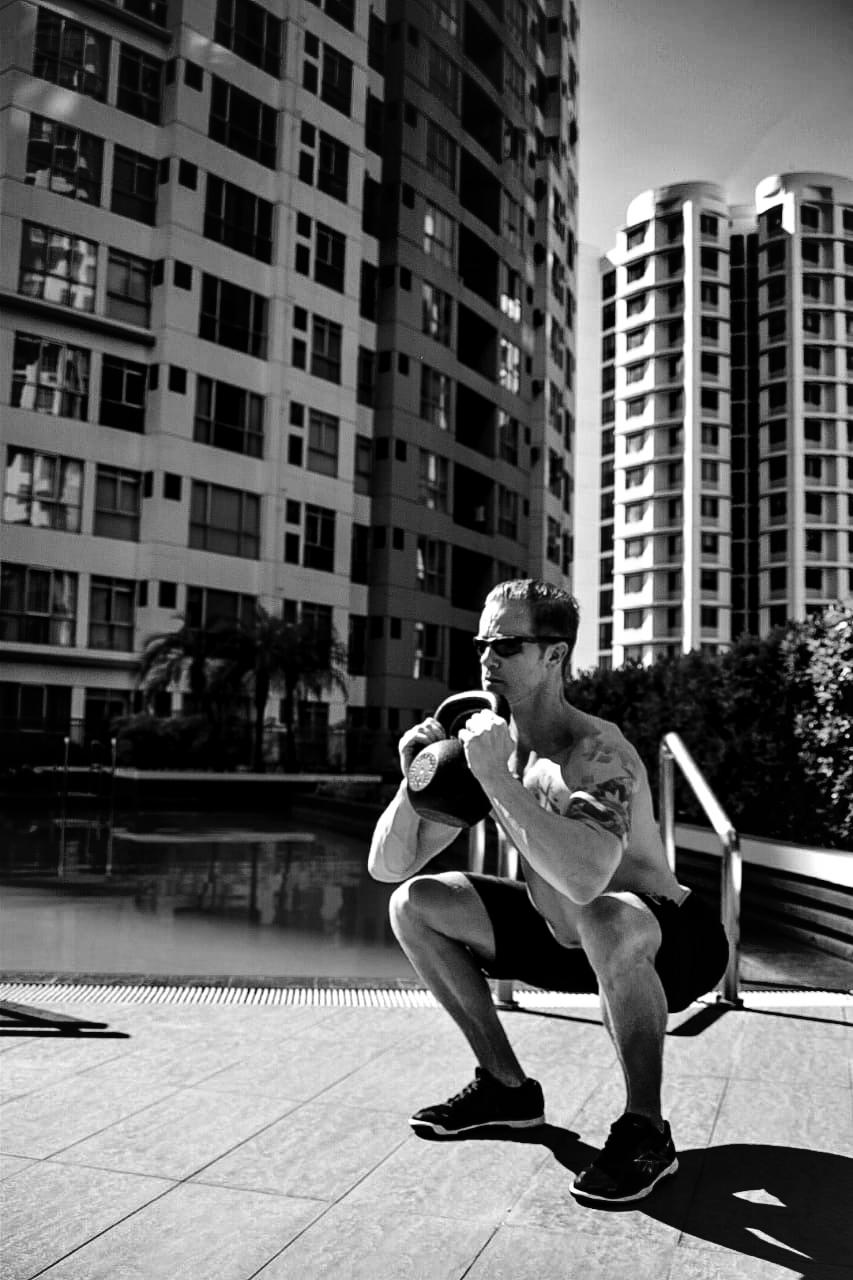
Kettlebell squats are an important component of tactical fitness, improving not just strength but also mobility, flexibility, and core stability. These exercises serve as a multifunctional training tool, allowing individuals to tackle multiple physical objectives simultaneously.
And they can all be done with just one kettlebell.
In this blog post, we’ll break down how kettlebell squats can enhance your training regimen, helping you reach your goals and maintain your fitness. We’ll explore their benefits and provide guidance on incorporating them effectively into your fitness routine.
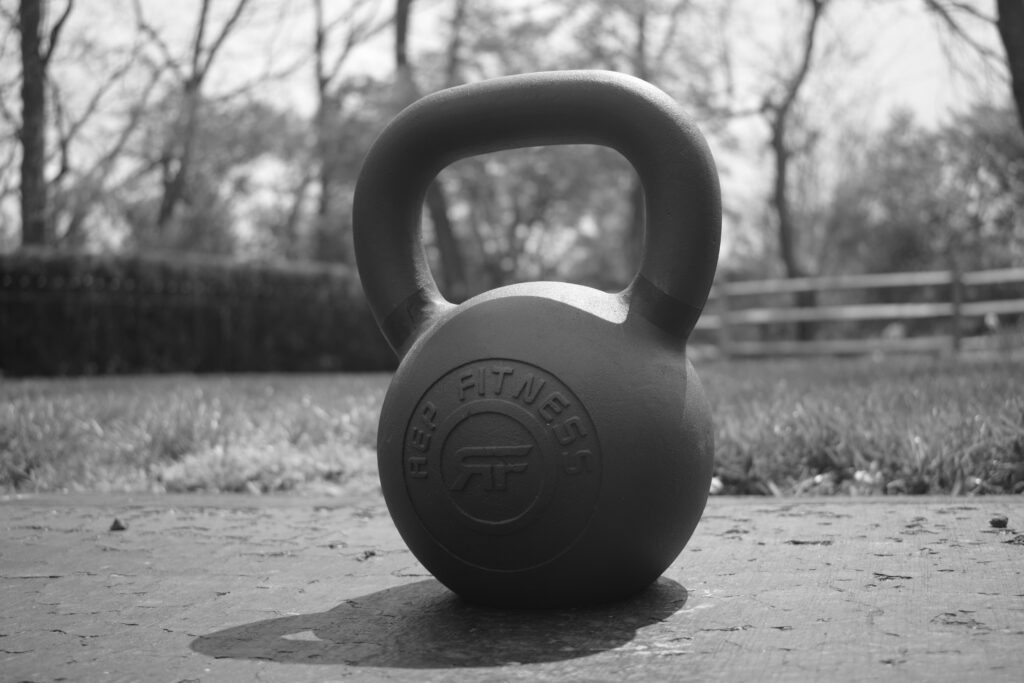
Benefits of Kettlebell Squats for Tactical Fitness
Kettlebell squats are incredibly versatile; these exercises can use kettlebells held in front, at the side, or in various other positions to engage different muscle groups.
Unlike bodyweight squats or squats with a barbell, kettlebell squats demand more stabilization, making you work not just harder, but smarter. Each movement engages multiple muscle groups, ensuring a high calorie burn and significant strength gains. Moreover, kettlebell squats are beneficial for improving hip mobility, which is a critical aspect of functional fitness at any level.
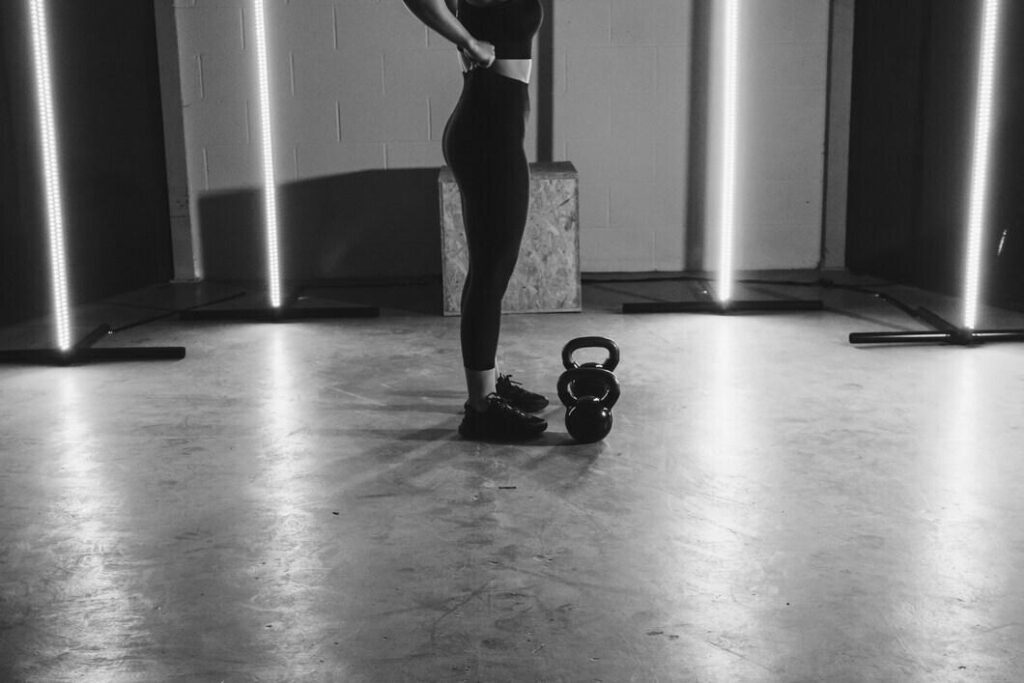
Types of Kettlebell Squats
There are many kettlebell squat variations, and you can choose the right variation based on which specific muscles you’d like to target. Whether you’re a beginner or a long-time enthusiast, there is a kettlebell squat variation for you. Here are a few of the most popular types of kettlebell squats, which make a great addition to your kettlebell workouts.
Traditional Kettlebell Squat
The Traditional Kettlebell Squat is a foundational movement in kettlebell training. This exercise is excellent for beginners and focuses on building the quads, hamstrings, and glutes while also engaging the core and upper body for stability.
- Starting Position: Stand with your feet shoulder-width apart and hold the kettlebell by the handles with both hands, bringing it close to your chest. Ensure your elbows are down and close to your body, engaging your lats to keep the kettlebell secure and stable.
- The Descent: Initiate the squat by sending your hips backwards and bending your knees. Keep your back straight and chest up to avoid leaning forward. Continue to lower yourself until your hip crease is at the same level as your knees.
- The Ascent: Drive through your heels to return to the starting position. Focus on keeping the kettlebell stable and maintaining a tight core throughout the movement.
Kettlebell Sumo Squat
The Kettlebell Sumo Squat is a variation that increases the involvement of the inner thighs, glutes, and hips by adopting a wider stance than the traditional squat. This position allows for a deeper range of motion and focuses the effort on the adductors and the lower body’s outer regions.
- Starting Position: Stand with your feet wider than shoulder-width apart, toes pointing outward. Grip the kettlebell with both hands and let it hang between your legs or hold it at chest height, whichever feels more comfortable. Keep the kettlebell here throughout the movement.
- The Descent: Begin by bending your knees and pushing your hips back as if you are sitting into a chair. Ensure that your chest remains upright and your back straight. Lower yourself until your thighs are parallel to the ground. If your mobility allows, going deeper can further enhance the activation of the inner thighs and glutes.
- The Ascent: Push through your heels and squeeze your glutes to rise back to the starting position. Maintain a firm grip on the kettlebell and keep your core engaged to support your back throughout the movement.
Kettlebell Goblet Squat
The Kettlebell Goblet Squat focuses on improving squat depth and posture while providing significant engagement of the core, glutes, and quads. This move also helps improve hip mobility. The Goblet Squat is excellent for beginners and advanced lifters alike.
- Starting Position: Stand with your feet shoulder-width apart, or slightly wider if it’s more comfortable. Hold the kettlebell upside down by the horns (the sides of the handle) with both hands, and bring it up to chest height. Keeping the kettlebell bottom-up and close to your body, but not touching.
- The Descent: Inhale and begin your squat by pushing your hips back and bending your knees. Keep your chest up and back straight as you lower down. Continue until your thighs are parallel to the floor or deeper, depending on your flexibility. As you reach the lowest point of your squat, press your elbows against the inside of your knees gently. This helps open your hips and stabilize your posture.
- The Ascent: Exhale and drive through your feet, pushing evenly from the heels to the toes, to return to the starting position. Ensure your chest remains lifted and your core engaged throughout the movement to protect your spine.
Kettlebell Overhead Squat
The Kettlebell Overhead Squat is an advanced exercise that tests the limits of your stability, flexibility, and strength. By holding the kettlebell overhead, this variation places considerable demand on the upper body, core, and the entire lower body, making it a full-body exercise.
This squat not only enhances your squat depth and form but also improves the functional mobility of your shoulders and back. Due to its complexity, progress to this exercise only after mastering both the basic squat and other overhead movements to ensure safety and effectiveness.
- Starting Position: Stand with your feet shoulder-width apart. Clean and press the kettlebell overhead with one arm, ensuring that the arm is fully extended and locked out. Your palm should face forward or slightly inward. Use your free hand for balance as needed by extending it out to the side.
- The Descent: Inhale as you begin to lower your body into a squat. Keep your hips back and down, ensuring your chest stays upright and your focus forward. As you squat, concentrate on keeping the kettlebell directly overhead and your arm locked. This position demands excellent core engagement to stabilize your torso and protect your spine.
- The Ascent: Exhale and drive through your heels to return to the starting position, keeping the kettlebell overhead and your arm straight throughout the movement.
Single-arm Kettlebell Front Squat
The Single-arm Kettlebell Front Squat, also known as the kettlebell front rack squat, is a challenging variation that tests and improves unilateral strength, balance, and coordination. By holding the kettlebell in a front rack position on one side, this exercise adds a unique asymmetrical load to the body, which engages your core and efficiently works the lower body.
- Starting Position: Begin by standing with your feet shoulder-width apart, or slightly wider for better stability. Clean the kettlebell to a front rack position, which means the kettlebell rests on the outside of your arm, with your elbow pointing forward and the kettlebell tucked close to your chest. Keep your other arm out to the side or in front for balance.
- The Descent: Inhale as you begin to lower your body into the squat. Push your hips back and bend your knees, keeping your weight centered and your chest up to prevent leaning too far forward or sideways. Focus on keeping the kettlebell stable and close to your body.
- The Ascent: Exhale and drive through your heels to rise back to the starting position. Press your feet firmly into the ground and engage your glutes as you stand, keeping the kettlebell in its racked position.
Incorporating Kettlebell Squats into Your Routine
Getting Started
Whether you’re a beginner or a seasoned fitness enthusiast, kettlebell squats can be integrated into your workout routine with ease.
Start with a focus on proper form using lighter weights. As you become more comfortable with the movements, gradually increase the weight and introduce various squat variations.
Incorporate these exercises into different workout days, using them in leg-specific sessions or as part of a full-body workout.
To conquer heavier kettlebell squats, consider elevating your heels. This can be achieved using weightlifting shoes or by placing a sturdy plate under each heel, which allows for a deeper squat while maintaining form.
This not only enhances your squat depth but also aids in accommodating any limitations in ankle mobility, letting you focus on driving up from the squat with powerful hip and leg engagement.

Common Mistakes and How to Avoid Them
One of the most common issues with kettlebell squats is improper posture, such as rounding the back or letting the knees cave in. To avoid these, always ensure your spine remains neutral, and your knees track over your toes during the squat. Engaging your core throughout the exercise helps protect your lower back, while focusing on pushing through your heels stabilizes your descent and ascent.
Always prioritize a proper warm-up before jumping into kettlebell squats to prepare your muscles and joints. Listen to your body, and if you feel pain beyond typical muscle fatigue, consider adjusting your form or consulting with a fitness professional.
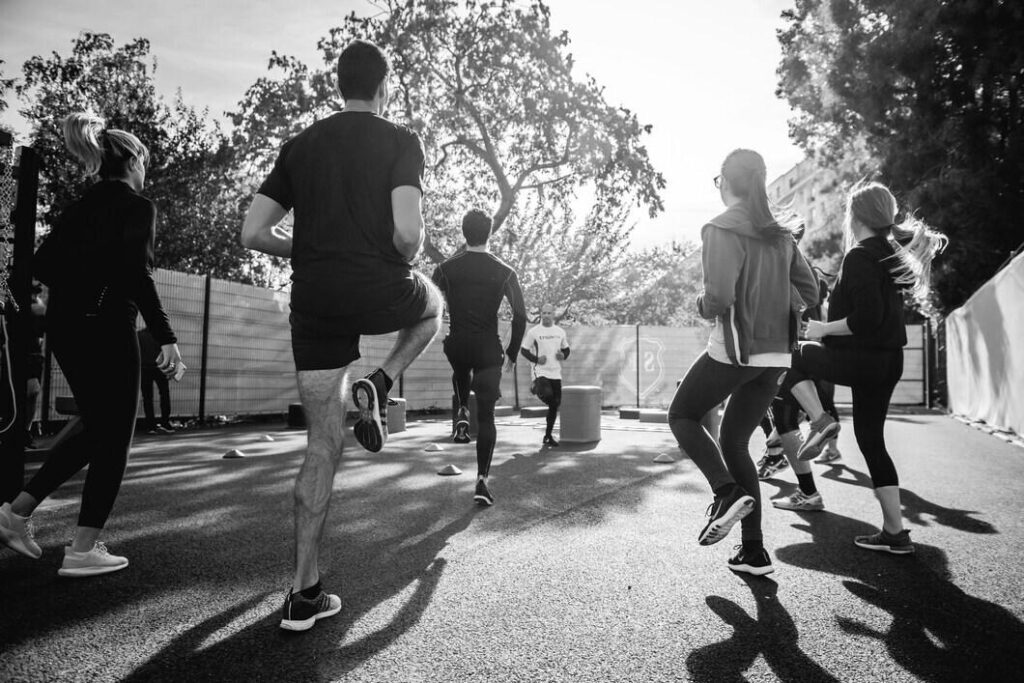
Progression Strategies
Once you master the basic form with lighter kettlebells, start to challenge yourself by adding weight incrementally. Only increase the weight once you can perform your current sets with perfect form. For those who are more advanced, incorporating more complex variations like the overhead squat or the single-arm front squat can provide further benefits and challenges.
Bonus Progression: Add a Weight Vest

For those who have mastered the kettlebell squat and it’s variations, and who are looking for an added edge in their training, adding a weight vest is a great way to take your training to the next level.
Because of the way the weight vest distributes weight more evenly over your body, it allows you to add weight to your squat without increasing the weight of the kettlebell. This allows you to continue to train with a lighter weight kettlebell while also increasing the weight for movements such as the squat.
Final Thoughts
Kettlebell squats are more than just an exercise; they are a key tool for building a strong, adaptable body. As you incorporate these into your routine, focus on form and gradual progression. Experiment with different variations to find what challenges you the most and listen to your body to maximize benefits while minimizing risks. Enjoy the journey!

